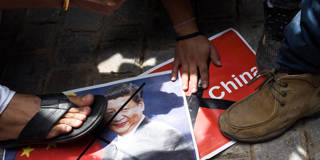With nationalism on the rise across Asia, leaders have strong incentives to craft a version of history that advances their cause, and few historical memories are as effective for this purpose as those of traumatic humiliation. China has mastered this dangerous approach, but it can be seen elsewhere, too, including in India.
PHILADELPHIA – Indian and Chinese troops have been locked in a standoff in Doka La – where the borders of Bhutan, China and India meet – for almost a month now, the longest such impasse between the two armies since 1962. In a not-so-subtle reference to that last conflict, in which India suffered a disastrous defeat, the Ministry of National Defense spokesperson Colonel Wu Qian has warned India to “learn from historical lessons.” But the lessons of history have a peculiar tendency to adapt to the perspective of those citing them.

PHILADELPHIA – Indian and Chinese troops have been locked in a standoff in Doka La – where the borders of Bhutan, China and India meet – for almost a month now, the longest such impasse between the two armies since 1962. In a not-so-subtle reference to that last conflict, in which India suffered a disastrous defeat, the Ministry of National Defense spokesperson Colonel Wu Qian has warned India to “learn from historical lessons.” But the lessons of history have a peculiar tendency to adapt to the perspective of those citing them.